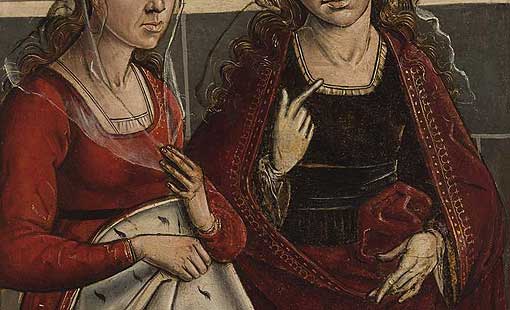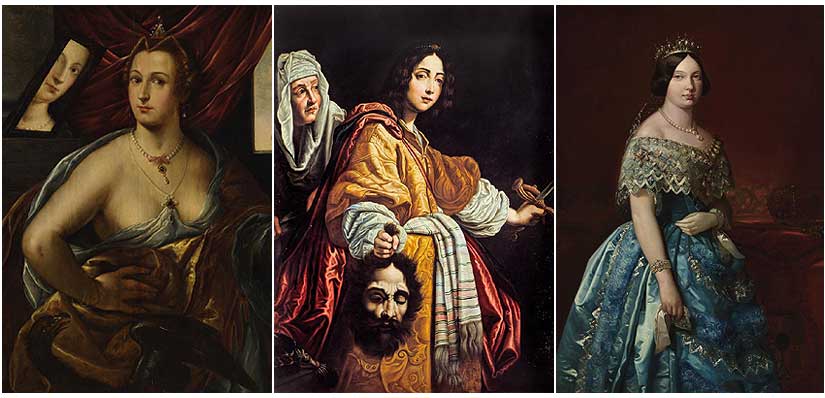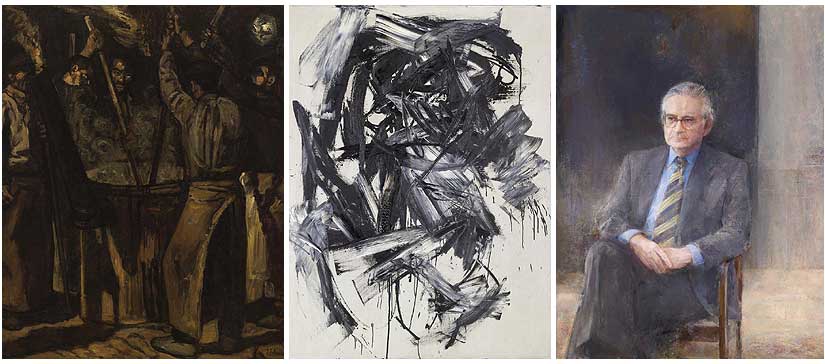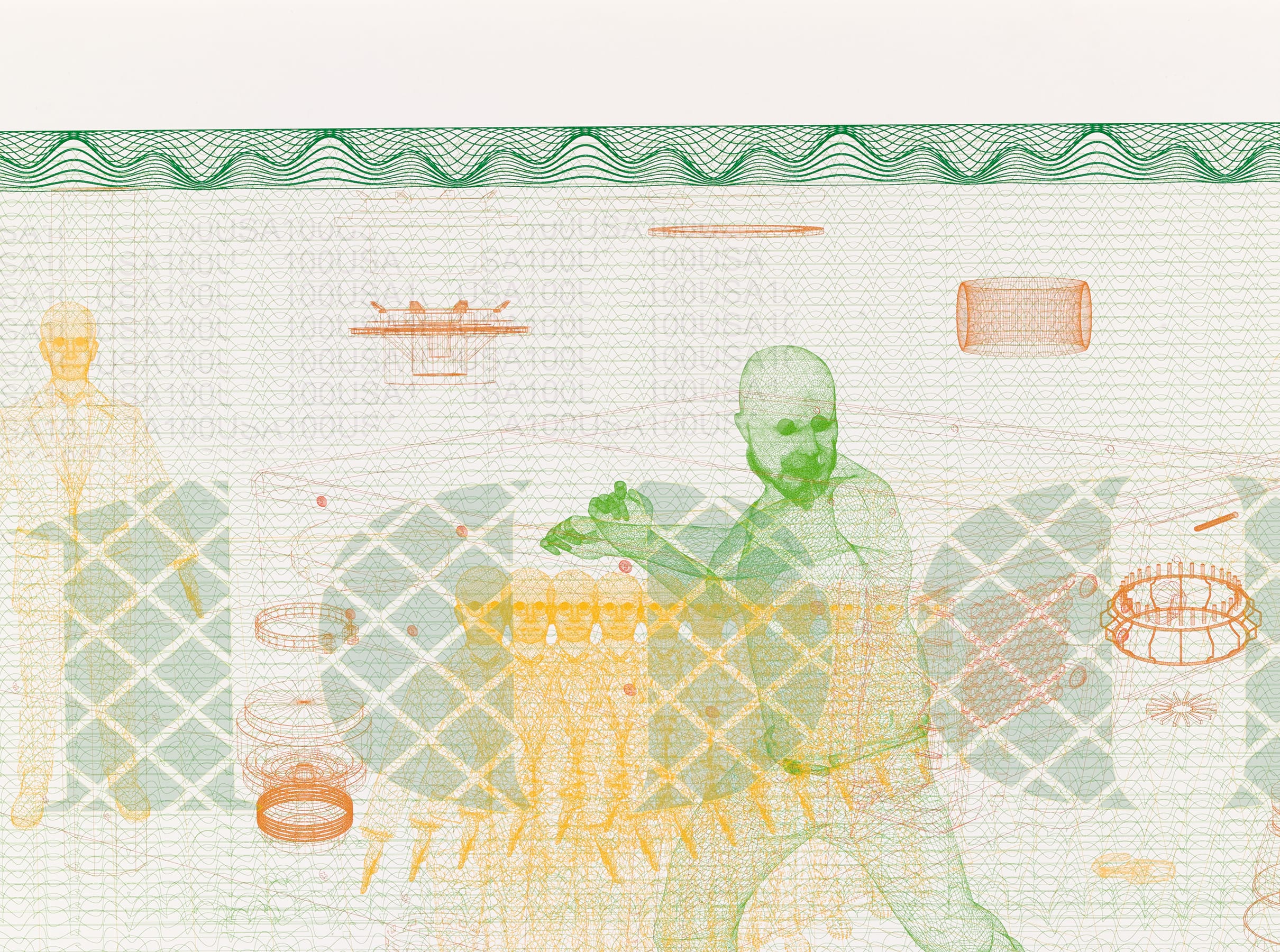
New itinerary by Marta Sanz focuses on the body
To kick off 2021, we are publishing a new addition to our Itineraries section, in which we invite guest historians, writers, artists, etc. to take a personal journey through our collection. These itineraries can be seen as virtual exhibitions that highlight specific aspects of the collection or show it in an unconventional light. On this occasion our guide is Marta Sanz, a writer whose novels include Susana y los viejos (a Premio Nadal award finalist), La lección de anatomía, Farándula (winner of the Premio Herralde de Novela in 2015) and more recently Pequeñas mujeres rojas.
 Anonymous Flemish, Nordic or French: Allegorical Figure (c. 1575) | Cristofano Allori (Copy): Judith with the Head of Holofernes (c. 1610) | Attributed to Federico de Madrazo y Kuntz: Isabella II of Spain (c. 1850)
Anonymous Flemish, Nordic or French: Allegorical Figure (c. 1575) | Cristofano Allori (Copy): Judith with the Head of Holofernes (c. 1610) | Attributed to Federico de Madrazo y Kuntz: Isabella II of Spain (c. 1850)
Like Hop-o’-My-Thumb leaving a trail of breadcrumbs through the forest, Sanz has designed her itinerary as an unrestricted personal journey which she says strives to highlight the idea of the body amidst the wide range of works in this excellent collection. She has selected fourteen pieces from different periods, ranging from a small panel painted circa 1500 Two Female Figures, from the studio of Pedro Berruguete to two late 20th century works: Las Meninas V by Soledad Sevilla and Portrait of Luis Ángel Rojo by Carmen Laffón, which was painted in 1998.
These three pieces are accompanied by several works by unknown artists from the 16th and 17th centuries, including a copy of the well-known Judith with the Head of Holofernes, plus paintings by Florentine artist Cristofano Allori, Antoni Viladomat i Manalt, Federico de Madrazo y Kuntz, Pere Borrell del Caso, Josep de Togores, José Gutiérrez Solana and Antonio Saura). Two works by this last artist are featured, Head and Sandra.
In her presentation of the itinerary, entitled Amputations, temptations, abstractions, muses, work, power, Marta Sanz explains that she sees works of art and literature as anatomies which can be dissected. She says that she has always been interested in how bodies are drawn in paintings, because this can reveal key information about the artists, about the historical and cultural context in which works were produced and shown and about the ideological assumptions that underlie art. She believes that the different styles in which bodies are depicted not only reflect but actually construct reality. "We metabolise the books that we read, the paintings that we look at and the songs that we hum", she argues. "A gesture of my hand echoes the pose of an actress in a romantic film; and my liking for open watermelons may be a red reminder of certain still-life paintings".
 José Gutiérrez Solana: The Asphalters of the Puerta del Sol (1930) | Antonio Saura: Sandra (1954) Carmen Laffón: Portrait of Luis Ángel Rojo (1998)
José Gutiérrez Solana: The Asphalters of the Puerta del Sol (1930) | Antonio Saura: Sandra (1954) Carmen Laffón: Portrait of Luis Ángel Rojo (1998)
This wish to decipher what is hidden (or at least not plainly visible) in the depictions of the body found in the kaleidoscopic history of art has led her to select certain works from our collection which form the starting point of her itinerary. She invites us to think about metaphors for the body that involve amputations, temptations, inspirations and abstractions. Ms. Sanz has thus designed a journey that stretches from the trampled bodies of the Muses to the stately bodies of women in positions of command, from ambiguous amputees to bodies hidden in overpainted images beneath non-figurative art, from the bodies of night-shift workers to those of men decked out in the regalia of power. The itinerary is accompanied by a long essay on one of her selections –Escaping Criticism by Pere Borrel del Caso- which she believes to be one of the jewels in the crown of the Banco de España Collection.
 Anonymous Italian: David with the head of Goliath (c. 1600) | Pere Borrel del Caso: Escaping Criticism (1874) | Soledad Sevilla: Las Meninas V (1982)
Anonymous Italian: David with the head of Goliath (c. 1600) | Pere Borrel del Caso: Escaping Criticism (1874) | Soledad Sevilla: Las Meninas V (1982)
